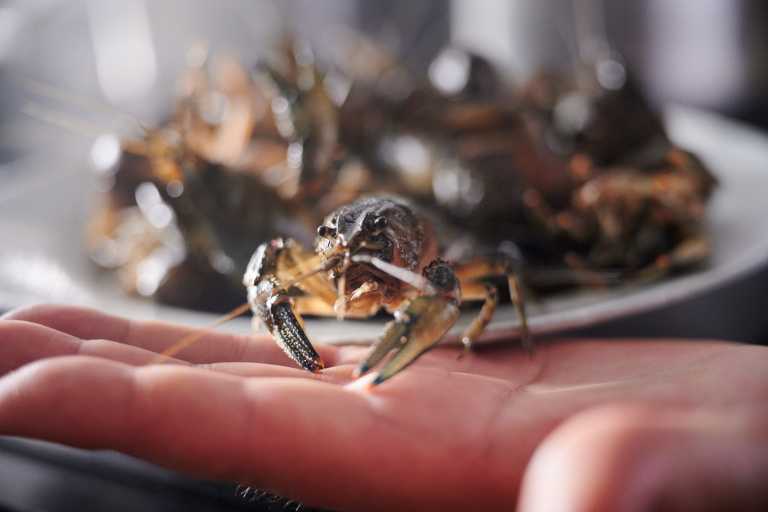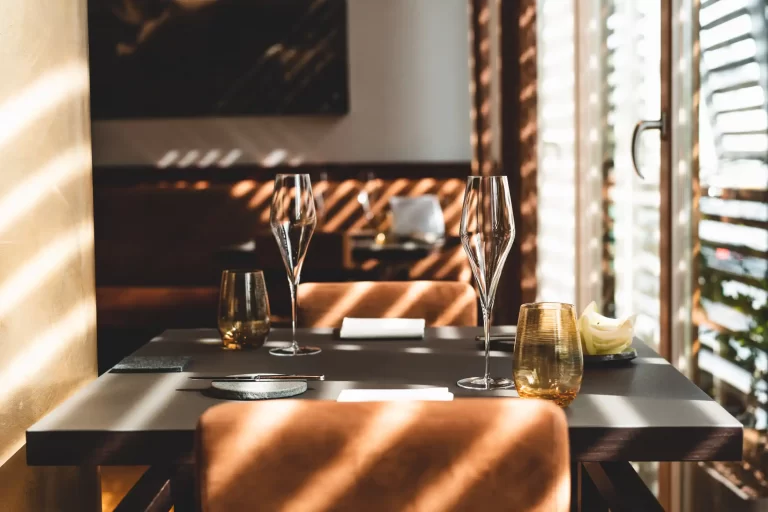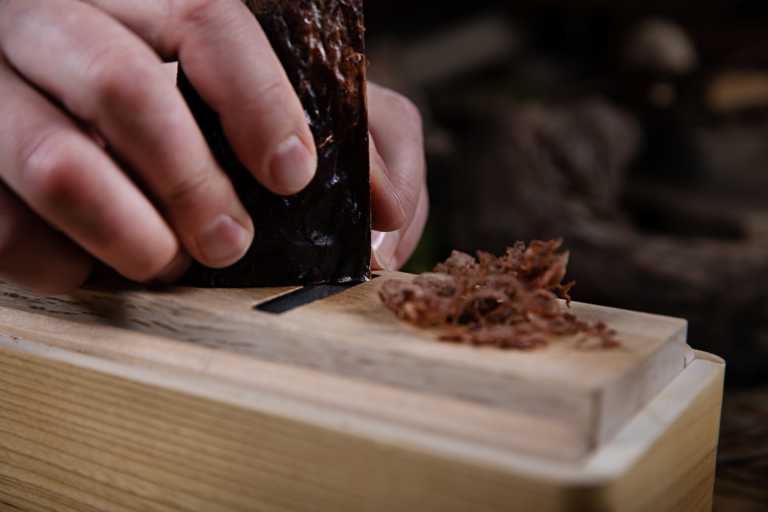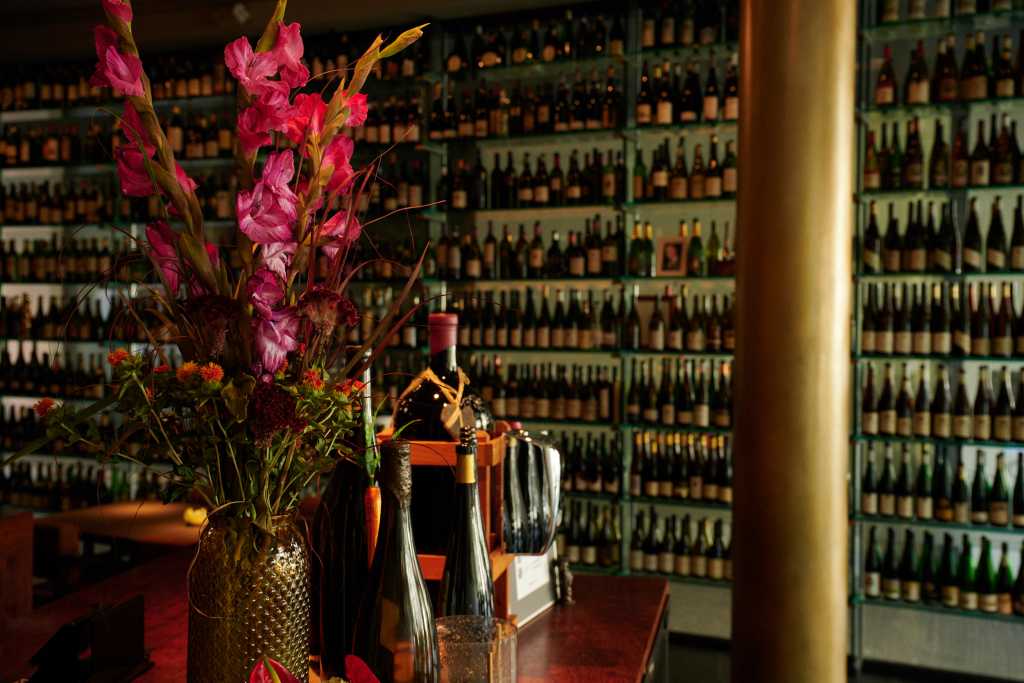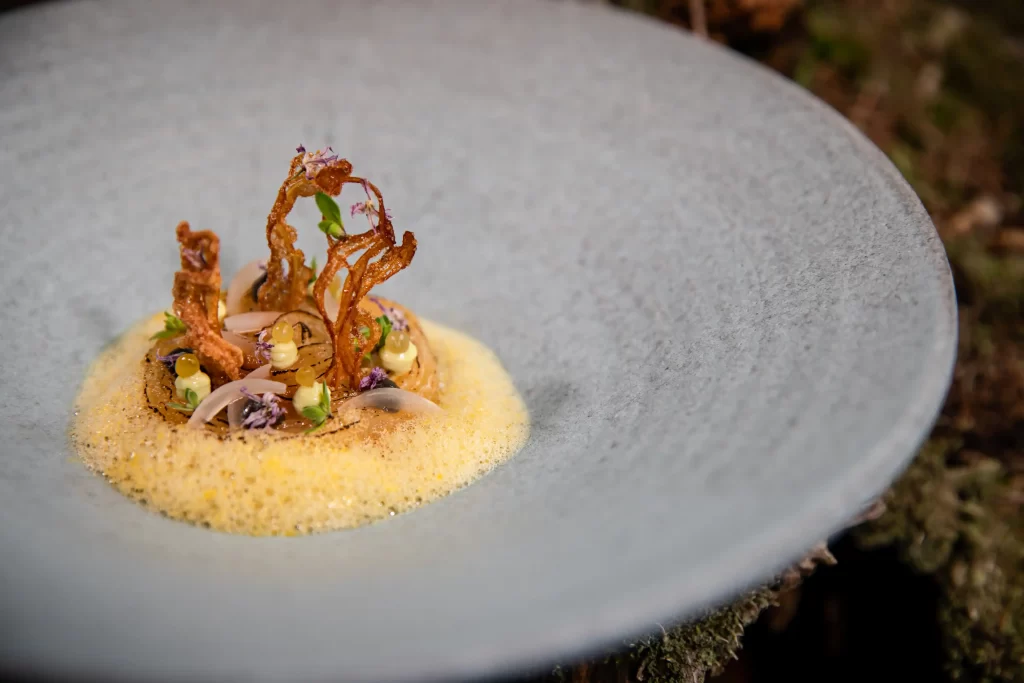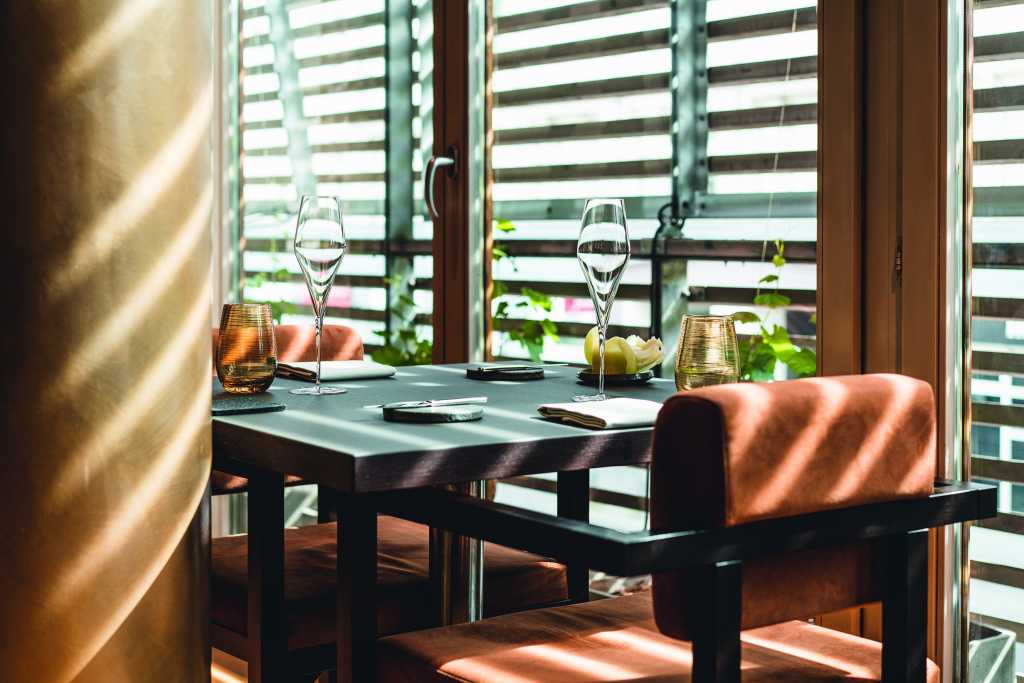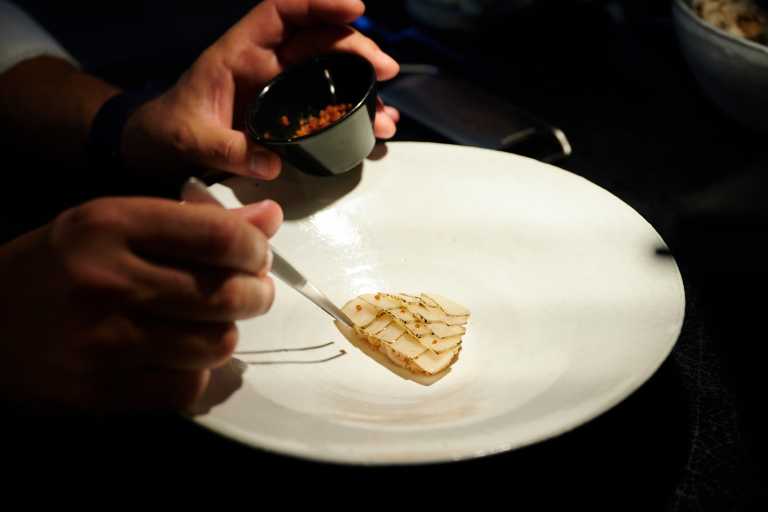“I’d really like to say that it has always been a lifelong dream of mine to become a chef, but it wasn’t that simple. It is important to mention that I grew up in the former East Germany, and we had different rules than the ones we know today. I wanted to express myself creatively and I was involved in arts from my early youth onwards.
“My childhood, and the environment which I grew up in, were extremely exciting: fresh fish in the lake in front of the house, and in the back there was a garden that my grandfather maintained and planted with much devotion. There was a protected natural meadow with wild herbs a little further on the left, and a sawmill from which I could smell the aromatic freshly sawn wood – sometimes resinous – when the wind came from the right direction.
“I used to help my grandfather in the garden, and I was fascinated by different flavours, good products and cooking with dedication. The smell of the large, natural farm meadow when it had been freshly mown – all this in itself was incredibly inspiring.
“There was this moment when I bit into a blade of grass and tasted the sweetness. I tasted a wide variety of grasses, flowers, plants and leaves; I smelled needles, from sweet to oxalic acid to slightly bitter. Some tasted as fresh as the meadow smelled; others were more tart or floral. It was an incredibly important time for me when I realised that all of a sudden there were hardly any weeds left – almost all of them were herbs. At a later moment, when I needed the flavours of a fresh sea breeze on the plate, I knew what to use.
“Back then I had no idea that I would be able to realise myself in the kitchen as I do today, so my motivation was the most honest. I started my career out of curiosity, and it became an indispensable passion. I always wanted to do better, and to the present day I have the feeling that I will never stop learning.
“In the course of my career I have asked myself more and more often: what have I not yet learned, what flavours have we not yet gained for ourselves, what have we forgotten to use in our culture or in our cuisine, and how can we extract the flavours from nature to use in our dishes?
“In the beginning, I quickly realised that the way I wanted to create dishes, the cuisine I wanted to create and experience and the dishes I wanted to present did not yet exist in Germany. Our food culture was, and is, on the move. Over time, it was only slowly beginning to break away from the heaviness of German home cooking and the Francophile style, and I wanted to change that.
“So I sought out instructors who had mastered a perfect craft and possessed a rudimentary sense of regional self- awareness. I quickly found my way into star gastronomy, such as with Johannes King, who was one of the first chefs to cook above-average creative and regional food in Germany. “Looking back, German cuisine had little delicacy in my early days. People were therefore quick to rave about regional influences. Now, when I run through the woods in the morning, I usually get more ideas out of our region than I was aware of in the beginning.
“At Rutz, we draw much of our inspiration from nature and our region. There is an almost-inexhaustible supply of products here – variety and diversity. We explore what I call ‘leaf, stem, flower, wood, bud, root’ and look for different methods of cooking it. We make sure that the natural essence of a product is transported. We cook it in different ways, ferment it and create natural acidity and depth.
“On the one hand I try to assign our dishes to an aroma that is exciting. Such as when you compress, reduce and conceal the familiar flavours, so that the dish does not betray itself, but when you eat it the memory comes and the dish develops aromatically, almost as if it were in layers. We look for a product in each dish – better yet, we look for an aromatic image that we follow and around which we build our dishes. We look for our own value.”
“Just as Vincent van Gogh matched his paintings to complementary colours, we work out complementary flavours and try to combine pleasure and art perfectly. In order not to get stuck during this process, we look at each product as if we were holding it in our hands for the first time. We consider cooking processes – fermentation, storage, drying – looking for new angles. I love it when I serve a plate made out of materials I like, with a certain scent, reduced, and yet at first glance it does not give away its secret.
“We work primarily regionally; our claim is to process only the best products of our region. The question is, how do they differ? Let’s take beetroot. There are hundreds of very different sub-varieties. We have samples planted by different farmers and compare the results. Which variety will do well in which soil? We take notes on the differences for future ideas. Then we compare all the cooking methods. If we leave a late carrot in the ground until after frost, it develops a charming sweetness that we use in our cooking. Or taking young cones of a pine and processing them so that they break down the coarse resin content in the taste, and thus become exciting for our dishes.
“We have sought out growers and farmers who would work out the nuances with us and then in turn continue to search for the diversity in use. We work exclusively with producers whom we know personally and whose methods we compare. It is not the product alone that decides whether we process it in our kitchen, but only when we have been to the actual site of production and have convinced ourselves that everything is going the way we want it to, only then do we include the product and supplier in our line. “In terms of dish creation, the approaches are quite different. One way is that we pick out a product that we have already planted or want to plant. And quite often I or my number one in the kitchen, Dennis Quetsch, have a concrete taste idea behind it, an inspiration.
“As a rule, we both try the course until it delights and surprises us and is perfectly balanced. Often ingredients are swapped, complementary flavours sought, consistencies changed, haptics intrigued. Sometimes only one ingredient remains, but it turns out to be so special that we subordinate the dish to it and start anew. The exciting thing is that even if ingredients are sorted out of the dish, they can be recalled at any time when a new course goes into testing. In the end, the dish leads us and I place that exact dish on the menu, which is not only innovative or seems perfect, but also brings a smile to my face over again.
“When you get to do what you love every day, it feels great and you can safely ignore everything that’s not so great. Rutz is 20 years old this year, and 17 of them are with me. We started small but with big goals, and meanwhile we can proudly say that we have written an important piece of history in Berliner gastronomy. But we are also far from finished with our mission.”
“Our restaurant is centrally located in Berlin Mitte, where everything is creative and metropolitan, and in summer you sit between herbs on a city terrace. We want to welcome our guests in a setting where they can feel comfortable and accompanied on a journey. Rutz appears young and contemporary; there is no heavy ambience. There are clear lines and natural materials that are coordinated with our concept. We send our guests on a journey on which they are accompanied by the service perfectly, and are open to any question, but still in an unobtrusive way.
“You can’t get a nicer compliment then when you are fully booked every evening and guests from all over the world make their way to us in Berlin to experience our creations. I would like to continue our spirit and our way of cooking in the future, and make our view of German national cuisine more popular.
“I must admit that in the past we were less concerned with awards. It is incredible fun to work with such a strong team, to grow steadily with our experiences and to be able to develop our ideas further. It was always important to me to develop a recognisable signature. When we received the third star by the Michelin Guide for our work it was an indescribable moment, especially because no other restaurant in Berlin had ever managed to win this award before.
“It is the highest honour for our restaurant to be awarded three stars, but also in connection with the Green Star from the Michelin Guide, or prizes such as the Green Award, which was given to us at the Rolling Pin Awards, makes it special and balanced for us. We want to continue to set clear signals for the future and want sustainable working to be a trend that does not fade, but continues to be the zeitgeist.
“Running a restaurant and a kitchen at such a level requires a lot of time and attention to detail. You can’t do something like this alone. The art is to inspire your employees and to lead a highly motivated team with people who also burn with passion, who want to learn, who want to understand, who are curious and remain so throughout the years. In addition to team motivation, the art is to run a kitchen as precisely as possible every day. This also includes not tolerating fluctuations. An idea is only good if it leaves the kitchen exactly the same way and not differently. And that means that every move is perfect for every guest and every plate. No compromises.
“What I love about running my own kitchen is that I can be as creative and as perfect as I want and process the products the way I love them. I can cook what I like to eat myself every day with the help of my team, and that is already a tremendous luxury.”
Find out more about Rutz and Marco at rutz-restaurant.de

